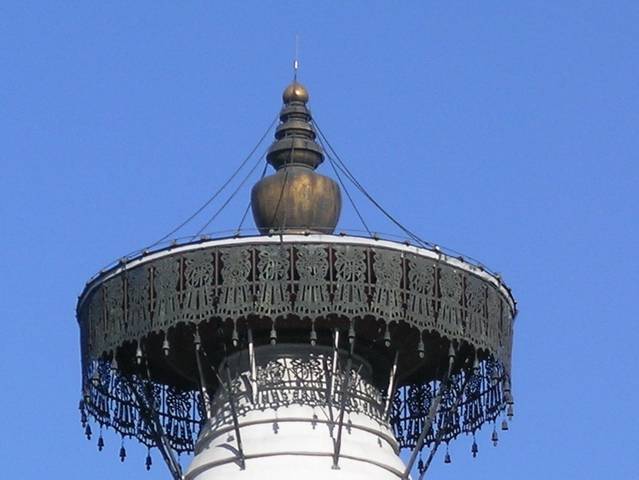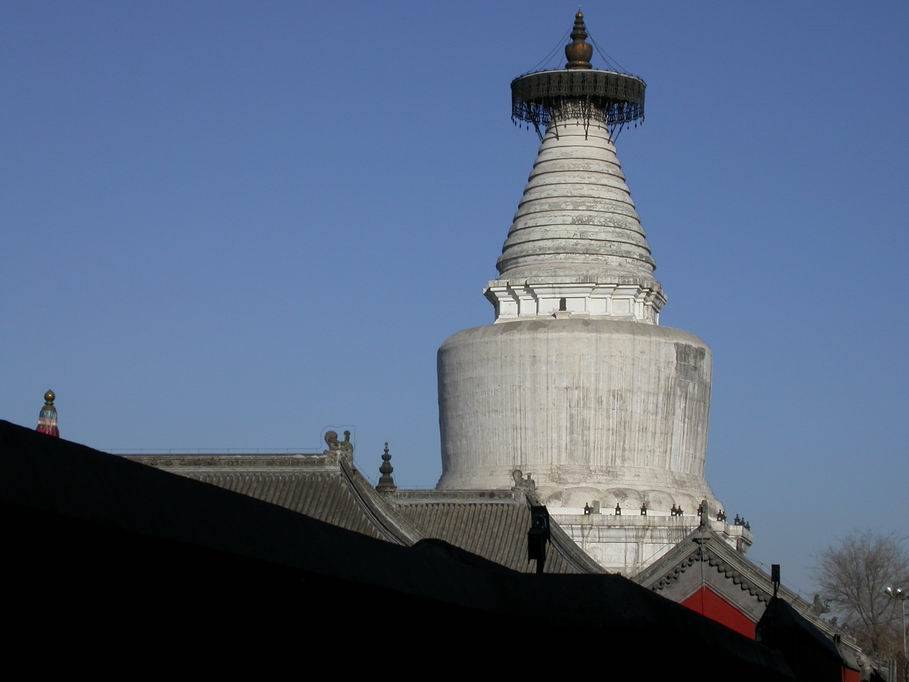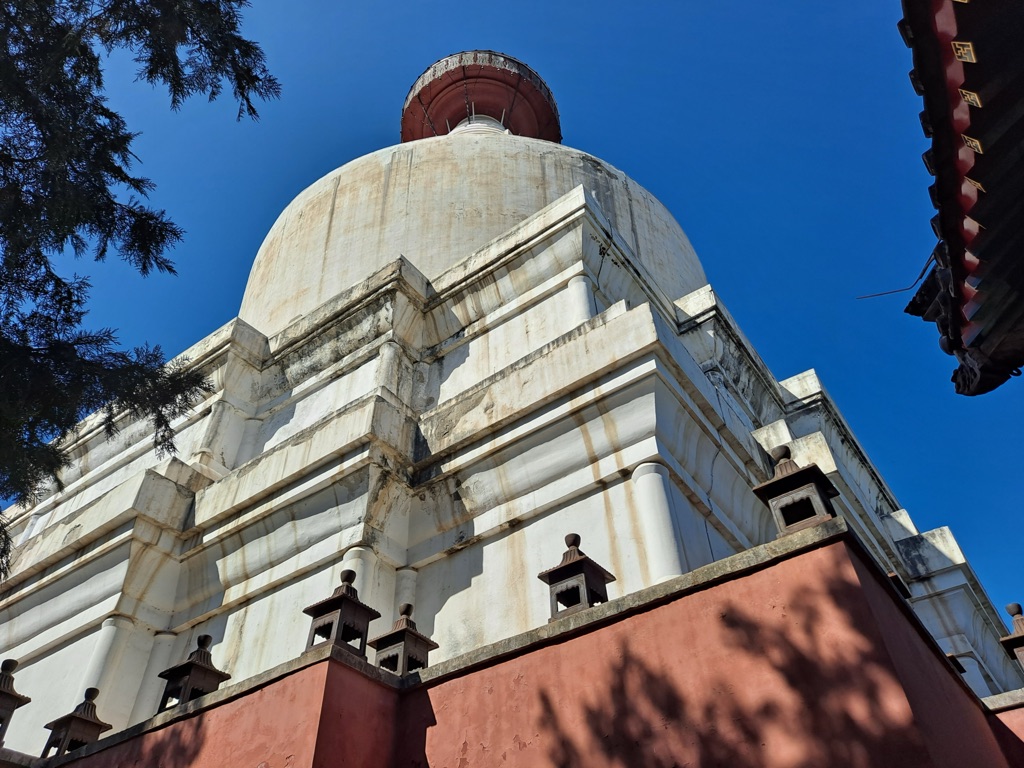The Miaoying Temple, also known as the White Stupa Temple, is a historical marvel located in Beijing, China. It’s renowned for its striking white stupa, which stands as a testament to the architectural prowess of the Yuan Dynasty. The temple has a rich history, having been built under the patronage of Kublai Khan, the founder of the Yuan Dynasty and the grandson of Genghis Khan. Over the centuries, it has been a site of Buddhist worship and cultural exchange, reflecting the diverse history of Beijing itself.
Get your dose of History via Email
Historical Background of Miaoying Temple
The Miaoying Temple, originally known as Dabao’en Temple, was constructed during the Yuan Dynasty. Its most prominent feature, the white stupa, was built under the command of Kublai Khan after he was influenced by a famous Tibetan lama. The temple served as a bridge between Mongolian rulers and the local Han Chinese, as well as a symbol of the Yuan Dynasty’s power. Over time, the temple has seen renovations and restorations, particularly during the Ming and Qing Dynasties.
Its discovery by the modern world is not well-documented, but it has been a known landmark in Beijing for centuries. The temple’s architecture and artifacts have been studied extensively by historians and archaeologists. It has also been the site of significant historical events, including serving as a residence for visiting dignitaries and a center for Buddhist learning.
The temple complex was built by craftsmen who employed techniques and styles that were a blend of Han Chinese and Tibetan influences. This fusion is evident in the temple’s layout, iconography, and the stupa’s design. The stupa itself is an architectural feat, constructed without the use of nails and featuring intricate carvings and Buddhist symbolism.

Throughout its history, the Miaoying Temple has been a place of worship and pilgrimage. It has housed many monks and lamas who have contributed to the spread of Buddhism in China. The temple has also survived several wars and natural disasters, which speaks to the resilience of its construction and the dedication of those who maintained it.
Today, the Miaoying Temple stands not only as a place of religious significance but also as a cultural heritage site. It attracts visitors from around the world who come to marvel at its history and architecture. The temple’s ongoing preservation efforts ensure that it remains a link between the past and present, offering insights into the Yuan Dynasty’s impact on Chinese culture.
About Miaoying Temple
The Miaoying Temple is a Buddhist temple complex that features a unique blend of Chinese and Tibetan architectural styles. The centerpiece of the complex is the white stupa, which rises to a height of 50.9 meters. It is one of the largest stupas in China and is coated in white marble, giving it a distinctive appearance that stands out against the Beijing skyline.
The stupa’s design is based on the Tibetan style, with a series of progressively smaller tiers leading to a gilded pinnacle. The structure is adorned with intricate carvings of Buddhist deities, floral patterns, and sacred symbols. The stupa’s interior once held sacred Buddhist relics and texts, making it an important site for religious ceremonies and pilgrimages.
The temple complex includes several halls and pavilions, each with its own historical and architectural significance. The main hall houses a large statue of the Maitreya Buddha, and the walls are decorated with murals depicting scenes from Buddhist lore. The craftsmanship of the temple’s structures showcases the skill of Yuan Dynasty artisans and the influence of Buddhist art from across Asia.

The materials used in the construction of the Miaoying Temple include wood, marble, and bricks. The use of white marble for the stupa was a deliberate choice to symbolize purity and to create a visual impact. The temple’s layout follows traditional Chinese principles of symmetry and alignment, with the stupa serving as the focal point.
Over the years, the Miaoying Temple has undergone several restorations to preserve its structures and artwork. These efforts have been crucial in maintaining the temple’s condition, allowing it to continue serving as a place of worship and a testament to the cultural exchange between the Han Chinese and Tibetan peoples during the Yuan Dynasty.
Theories and Interpretations
The Miaoying Temple, particularly its white stupa, has been the subject of various theories and interpretations. Historians believe that the temple’s construction was a political statement by Kublai Khan to demonstrate the Yuan Dynasty’s acceptance and integration of Tibetan Buddhism.
Some theories suggest that the temple’s architecture reflects a cosmological significance, with the stupa representing the Buddhist universe. The intricate carvings and symbols found on the stupa are thought to have specific religious meanings, guiding devotees on their spiritual journey.
There are mysteries surrounding the original contents of the stupa’s interior. It is believed to have housed precious Buddhist relics, but the exact nature of these relics remains unknown. The stupa’s inaccessible chambers have sparked curiosity about what treasures they might contain.
Historical records and archaeological studies have been used to interpret the temple’s past. These records provide insights into the temple’s role in the Yuan Dynasty’s political and religious life. However, gaps in the historical record leave room for speculation about certain aspects of the temple’s history.
Dating of the Miaoying Temple has been carried out using historical texts and architectural analysis. These methods have helped establish the temple’s age and the timeline of its construction and renovations. The white stupa’s enduring presence serves as a physical chronicle of Beijing’s evolution over the centuries.
At a glance
- Country: China
- Civilization: Yuan Dynasty
- Age: Constructed in the 13th century AD
Conclusion and Sources
- Wikipedia: https://en.wikipedia.org/wiki/Miaoying_Temple
- Britannica: https://www.britannica.com/topic/Buddhism
- World History Encyclopedia: https://www.worldhistory.org/Yuan_Dynasty/

